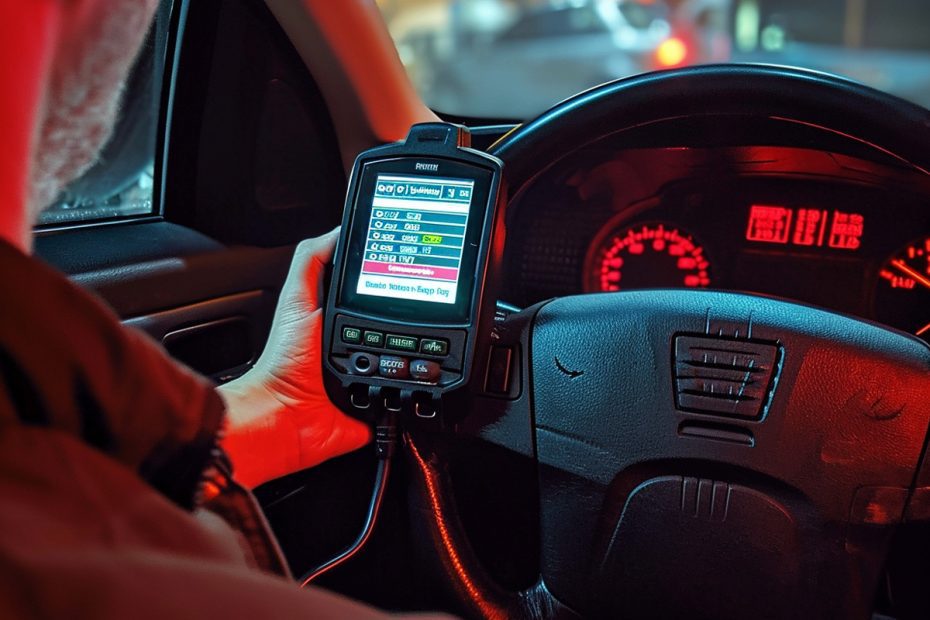Ever had that moment when your car’s check engine light comes on and you’re not sure what’s wrong? It’s like your vehicle is trying to tell you something, but without the right tools, it’s speaking an alien language. Well, I’m here to break down that barrier with onboard diagnostics (OBD).
Understanding how to read check engine light codes is easier than you might think. With the right scanner and a bit of know-how, you’ll be uncovering the mysteries of your car’s health in no time. Let’s dive into the world of OBD and get you fluent in your car’s language.
What is Onboard Diagnostics (OBD)?
Onboard Diagnostics (OBD) is a vehicle’s self-assessment system that continuously monitors the performance of the engine, transmission, and other essential components. When I turn the key in the ignition, OBD gets to work, checking for abnormalities or malfunctions.
Initially, it started out as a way to reduce emissions, but has evolved to become a critical part of modern vehicle maintenance. The current system, known as OBD-II, is the second generation, standardized for vehicles in the United States from 1996 onwards. It’s a universal protocol that allows a wide array of diagnostic tools to interface with it.
Using an OBD-II scanner, I’m able to translate complex diagnostic trouble codes (DTCs) into clear, understandable language. These codes can indicate anything from a loose gas cap to more serious engine issues. The OBD system includes various data streams, such as vehicle speed, throttle position, and air temperature, enabling comprehensive troubleshooting.
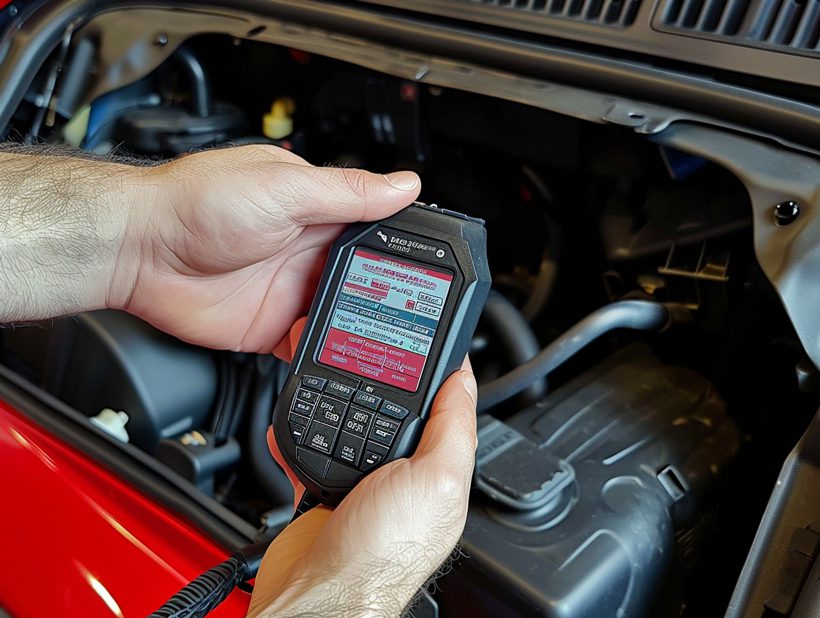
The beauty of OBD is in its simplicity for the user. Even without advanced automotive knowledge, I can use a basic scanner to read codes which promptly communicates what’s going on under the hood.
| Component Monitored by OBD-II | Function Monitored |
|---|---|
| Engine Management System | Fuel mixture, ignition timing |
| Emission Control System | Catalytic converter efficiency |
| Exhaust System | Oxygen sensor data |
| Transmission | Shift timing and quality |
Understanding OBD is essential for proactive vehicle maintenance. By being aware of what each code signifies, I’m able to address small issues before they escalate. If I notice my vehicle’s performance dipping or the check engine light illuminating, I can quickly use OBD-II to identify the root cause, making it a staple in my car care routine. This knowledge not only saves time but can also reduce repair costs by allowing me to articulate specific concerns to my mechanic.
How Does Onboard Diagnostics Work?
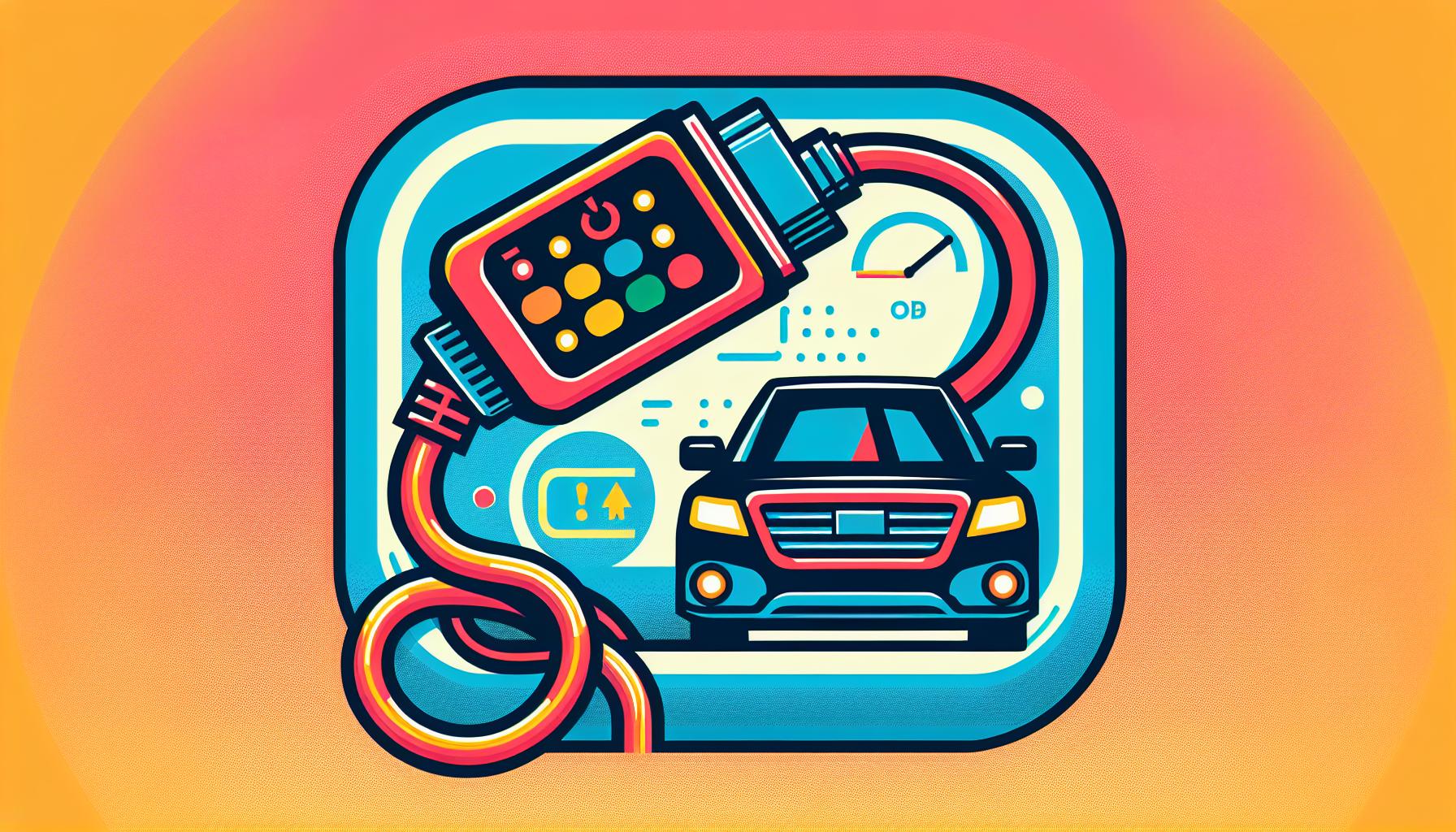
When I first turn the ignition key, my car’s onboard diagnostic system kicks into gear before I even begin my journey. This complex network of sensors, microprocessors, and software is tireless, consistently monitoring my vehicle’s health and performance. It’s designed to detect any irregularities in engine operation, emissions level, and a host of other systems.
The Heart of OBD: The central processing unit, or CPU, of my car’s OBD system is akin to a diligent overseer. It receives a constant stream of data from various sensors throughout the vehicle. These sensors track everything from oxygen levels in the exhaust to the temperature of the engine coolant. The primary task of these sensors is to ensure that the vehicle meets emission standards and operates at peak efficiency.
When a sensor picks up a reading that veers off the normal range, it triggers the check engine light on my dashboard. This is the car’s way of crying out for attention ‚Äì something isn’t quite right. Underneath the dash, usually near the steering column, there’s a port where I can plug in an OBD scanner. This scanner is the key to unlocking the mystery behind the illuminated warning light.
Reading the Signals: Once connected, the scanner communicates with my car’s CPU to retrieve the diagnostic trouble codes, or DTCs. Each code correlates to a specific vehicle issue, allowing me to discern what’s going wrong under the hood. The codes typically start with a letter followed by four numbers, and the first letter is crucial for categorization:
- Powertrain (P codes): Engine and transmission issues
- Chassis (C codes): Problems related to systems such as brakes and steering
- Body (B codes): Anything from power seating to airbags
- Network (U codes): Communication faults between the car’s computers
Armed with these codes, I begin the real detective work. It’s not just about knowing the code, but also understanding the context around it. Fuel system too lean? Oxygen sensor readings might be off. Misfire detected? Time to inspect the spark plugs or ignition coils. The beauty of OBD is in the specifics it provides, narrowing down my quest for a solution.
Importance of Understanding Check Engine Light Codes
Having a grasp on check engine light codes isn’t just for mechanics; it’s crucial for any car owner. When the dreaded light pops up on my dashboard, I know it’s time to listen to what my car is trying to communicate. Early recognition of these codes means I can often sidestep costly repairs. From experience, I’ve learned that addressing minor issues immediately can prevent them from snowballing into major problems.
For instance, if my car‚Äôs oxygen sensor is failing, the fuel consumption may increase without tackling the root cause. This isn’t only about the health of my car but also about optimizing fuel efficiency and maintaining a clean emission record. By understanding the codes, I turn a cryptic signal into actionable insights that can keep my car running smoothly and economically.
Moreover, with the right knowledge and a trusty OBD-II scanner, I’ve diagnosed issues that could potentially strand me on the side of the road. It’s empowering to have this level of diagnostic capability in my hands. From simple fixes like a loose gas cap, which I can resolve myself, to more complex issues requiring professional help‚Äîknowing the exact problem saves me from unnecessary troubleshooting and guesswork.
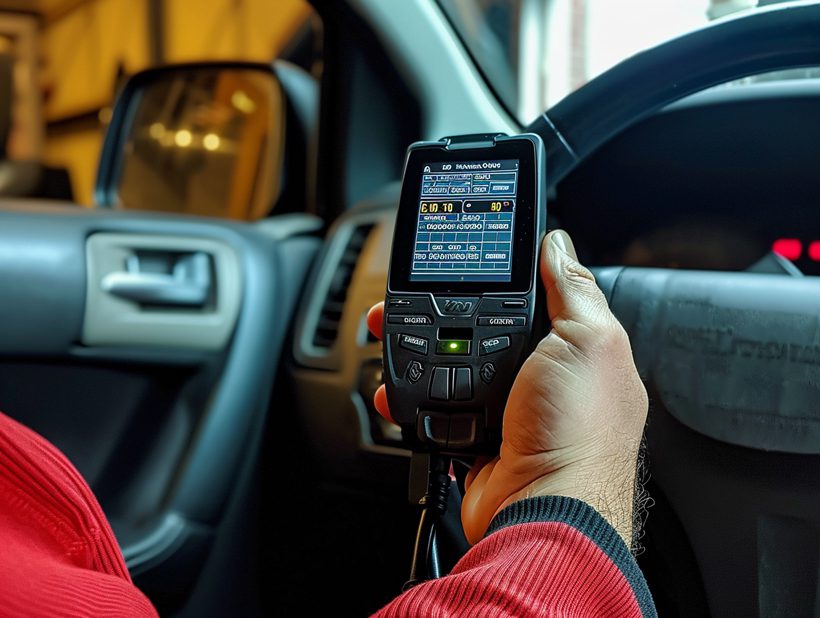
The diagnostic trouble codes stored in the OBD system are indispensable tools. They are my first hints at electrical or mechanical anomalies. Here’s what generally happens:
- The CPU detects an irregularity
- A specific DTC is recorded
- Upon scanning, I receive this code
- I then consult a database or manual to interpret the code
This process has saved me countless hours and removed the guesswork from vehicle maintenance. It’s not about just reading the codes; it’s about comprehending what they signify for the health and longevity of my vehicle. By keeping an eye on these signals, I stay one step ahead in the upkeep of my car.
Tools Needed for Reading Check Engine Light Codes
When I’m faced with that glaring check engine light, my first step is to assemble the right tools for diagnosis. It’s a common misconception that reading these codes requires expensive or professional-grade equipment. In reality, with a few essentials, I can access detailed information to begin troubleshooting.
The cornerstone tool is an OBD-II scanner. This device is the key to unlocking a wealth of data from my car’s onboard computer. Modern cars, typically those manufactured after 1996, are equipped with an OBD-II port where this scanner plugs in. Scanners range from basic readers that just display codes, to more advanced units that provide live data and full code definitions.
In addition to a scanner, I make sure to have a reliable internet connection or a vehicle code reference manual. Let’s face it, not all of us have a comprehensive mental library of trouble codes. Access to a database or a manual helps me cross-reference the trouble codes the scanner reveals.
For those who prefer a more tech-savvy approach, there are several smartphone apps that work in conjunction with a Bluetooth-enabled OBD-II adapter. These apps not only read codes but can clear them too, and some even offer features like fuel economy tracking or maintenance reminders.
Here’s what I make sure to have on hand:
- OBD-II scanner or Bluetooth adapter
- Smartphone or laptop (for certain scanners or apps)
- Internet access or a vehicle code reference manual
- Pen and paper (or a digital note-taking app) for recording code information
With these tools, I’m poised to delve into the heart of the matter: diagnosing the issue that’s triggered my car’s check engine light. Understanding what each code means is a crucial step but it’s also imperative that I, or any car owner for that matter, have the aptitude to translate these codes into actionable solutions, whether that’s tightening a loose gas cap or planning a more complex repair.
Step-by-Step Guide to Reading Check Engine Light Codes
When your car’s check engine light flickers on, a straightforward process can help you make sense of the underlying issue. I’ll guide you through each step to confidently decode what your vehicle is trying to communicate.
First, ensure your car is in a safe location and turned off. Preparing a space to work in peace is crucial; you don’t want to rush this process. Once everything’s secure, locate your vehicle’s OBD-II port, usually found underneath the dashboard near the steering wheel.
Now it’s time to plug in your OBD-II scanner. Turn the ignition to the “On” position without starting the engine. This powers up the car’s electronics, allowing the scanner to communicate with the vehicle’s computer system.
Your scanner will come to life and may prompt you for some basic information about your vehicle. You’ll need to input details like the make, model, and year‚ this helps in pinpointing the exact codes relevant to your car.
Tap the ‘Read’ or ‘Scan’ button on your device. The scanner will now start its interrogation process, cycling through the car’s onboard systems to check for any registered fault codes. Be patient; this could take a minute or two.
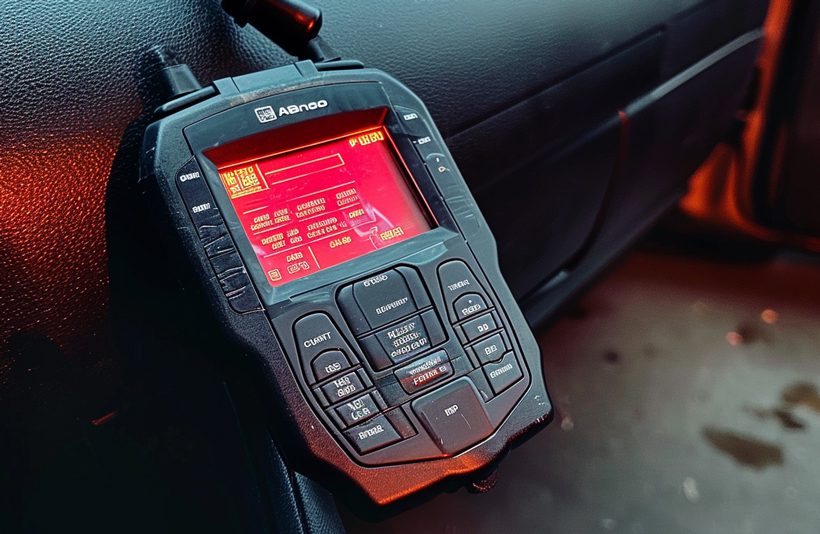
Upon completion, the scanner will display one or more diagnostic trouble codes (DTCs). These codes typically consist of a letter followed by four numbers, like P0301, indicating an issue with a specific cylinder’s misfire.
Reach for your pen and paper or open your digital note-taking app and jot down every code displayed. You’ll use these to dig into the potential causes and solutions for each problem.
Next, harness the power of the internet or your reference manual to translate these alphanumeric puzzles. Look for a database or a reliable forum specific to your car’s make and model. You’ll find that many codes are common across various models, but some might be unique to your vehicle’s manufacturer.
Armed with your newfound knowledge on the potential issues flagged by the DTCs, you’ll be able to approach your vehicle’s quirks with a level-headed strategy. Whether that’s tightening a loose gas cap identified by code P0442 or taking on something more complex, you’re now equipped to take the next steps. Remember, some issues are easy fixes, while others may require a professional’s expertise, but at least you’re no longer in the dark.
Common Check Engine Light Codes and their Meanings
While navigating the maze of OBD-II codes, I’ve come across several that seem to pop up more frequently than others. These common codes often point to issues that car owners can identify and rectify with a little know-how and elbow grease.
For starters, P0171 and P0174 are codes I’ve encountered quite a bit. They signal that the engine is running too lean, meaning there’s too much air and not enough fuel in the combustion mix. This can be caused by a range of issues from faulty oxygen sensors to leaks in the vacuum hose. Keeping an eye out for stalling or hesitation during acceleration can clue you in that these might be the codes you’re dealing with.
Moving on, P0300 is another code that speaks volumes without saying much‚Äîliterally. It indicates random, multiple misfires in the engine. I’ve learned that spark plugs or a clogged fuel filter are often to blame, but it could also indicate more complex problems like a faulty ignition system. This engine misbehavior can result in rough idling, which is anything but subtle.
The code P0420 often dings when there’s trouble with the catalytic converter performance. Recognizing this is crucial since the converter plays a pivotal role in the vehicle’s emission system. Experiencing reduced fuel efficiency or a noticeable lack of power when driving could suggest this is the code the scanner might throw at you.
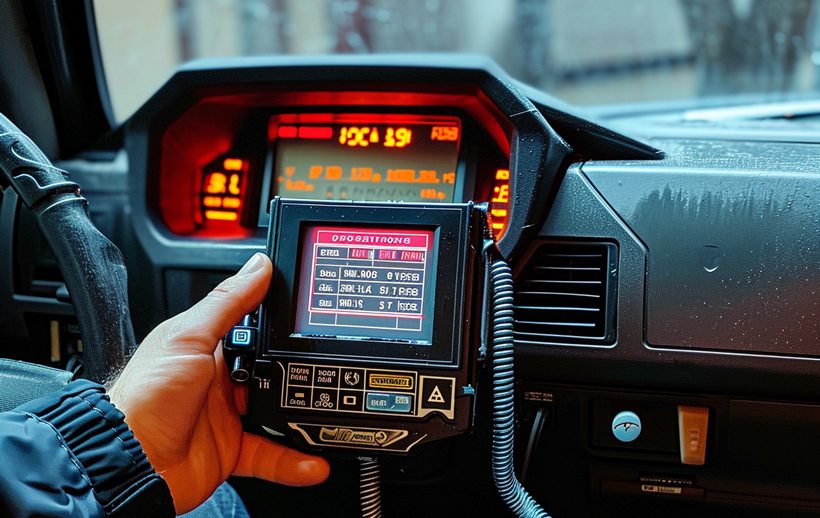
Lastly, the P0455 code rears its head when there’s a large leak detected in the evaporative emission control system. The loose gas cap, the usual suspect, is an easy fix, but if tightening it doesn’t extinguish the check engine light, further investigation into valves or hoses may be required.
| Code | Meaning | Possible Causes |
|---|---|---|
| P0171 | Engine too lean (Bank 1) | Oxygen sensors, Vacuum leaks |
| P0174 | Engine too lean (Bank 2) | Oxygen sensors, Vacuum leaks |
| P0300 | Random, multiple misfires detected | Spark plugs, Fuel filter, Ignition |
| P0420 | Catalyst system efficiency below threshold | Faulty catalytic converter |
| P0455 | Evaporative emission control system leak | Loose gas cap, Valve/hose |
Tips for Preventing Check Engine Light Issues
Maintaining a vehicle’s health is much like looking after our own ‚Äì regular check-ups and timely intervention can prevent major issues down the road. I’ve found that one of the best ways to avoid the dreaded check engine light is to stay on top of routine maintenance.
I always make sure to keep up with the vehicle’s maintenance schedule as outlined in the owner’s manual. This includes oil changes, air filter replacements, and spark plug inspections, among other tasks. Timely maintenance doesn’t just prevent check engine light mishaps; it also ensures that my car runs smoothly and efficiently.
Another crucial step I take is to use the right type of fuel and oil recommended by the manufacturer. This may seem trivial, but using lower quality fuels or incorrect oil can lead to carbon build-up and affect the engine’s performance, potentially triggering the check engine light.
Additionally, I pay attention to how my car behaves. If I notice unusual sounds, smells, or performance issues, I don’t wait for the check engine light to come on; I take it as a sign to check things out or have a professional look at it. It’s often these subtle cues that can hint at an underlying issue.
Iconic check engine light triggers include:
- Loose or damaged gas cap
- Worn spark plug or ignition coil
- Faulty oxygen sensor
- Aging battery
By addressing these components before they fail, I can often sidestep more serious problems. I regularly inspect the gas cap for any signs of damage after refueling and replace batteries before they reach the end of their life expectancy.
Investing in a basic OBD-II scanner has been a game changer for me. It’s allowed me to perform preliminary diagnostics and understand my car’s health better. Being proactive about car maintenance and paying attention to my vehicle’s needs has kept the check engine light off and provided peace of mind.
Conclusion
Mastering the use of an OBD-II scanner is a game-changer for any car owner. It’s empowering to diagnose potential issues with your vehicle before they escalate into costly repairs. Remember, the key is in understanding what the codes mean and taking swift action. Whether it’s a simple fix like tightening a gas cap or a more complex issue such as a failing catalytic converter, your ability to interpret these codes can save you time and money. Stay vigilant with your car’s maintenance and let that check engine light be a guide, not a source of stress. Drive smart, maintain well, and trust in the tools at your disposal to keep your vehicle running smoothly.
